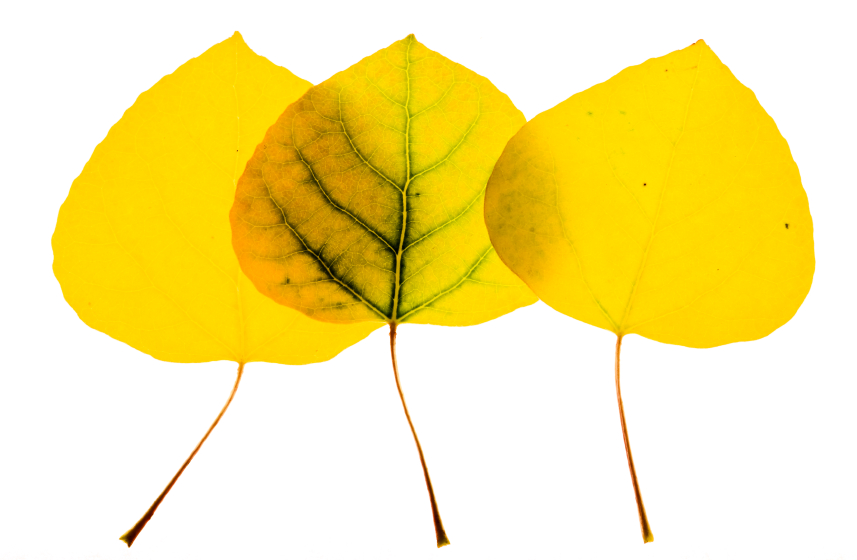In the rural Rocky Mountains where I live, we disagree about a lot of things — politics, religion, water, Tim Tebow — but we all agree on aspen. We love them, especially when they turn blaze-yellow in the fall, and we’d like them to stick around. So in 2004, when aspen throughout the Rockies started dying wholesale, the public reaction was fierce. What the heck was happening to our trees?
Since 2008, the dieoff has slowed, but so-called sudden aspen decline, or SAD, has hit nearly one-fifth of the aspen stands in the Rockies. It turns out that the aspen decline was driven by drought — namely a prolonged, region-wide dry spell that peaked in the early 2000s, and is thought to be a harbinger of the more frequent and severe droughts expected as the climate changes. In a grim sign of the times, though, it’s no longer enough to know why the trees are dying. In order to predict future die-offs, it’s important to know how.
So Bill Anderegg, a doctoral student at Stanford and a native of southwestern Colorado, performed something like an autopsy on aspen. Anderegg and his colleagues assumed, from previous studies of pinyon pines, that aspen killed by SAD essentially starved to death. When stressed by drought, the thinking went, the trees closed the pores on their leaves to keep water from escaping, interrupting photosynthesis and, over time, running down their carbohydrate supply. But in a paper published yesterday in the Proceedings of the National Academy of Sciences, Anderegg and his colleagues report that the aspen are dying not of hunger, but of thirst.
When the researchers studied dying aspen in the field in Colorado, and induced drought stress in both potted aspen and full-grown trees, they found that the aspen hung on to plenty of carbohydrates. The problem was that the water-delivery systems in the trees’ roots and branches were blocked with air bubbles, like straws trying to pull water from too-shallow pools. (This condition is called cavitation, and researchers who have applied sensitive microphones to drought-stressed trees — don’t ask me why — have recorded the pinging sound of air bubbles shooting into the water-carrying xylem tubes.) When trees lose 50 percent of their water-delivery capacity, they start to drop their leaves, no matter the season; the dying aspen in the study had lost 70 to 80 percent. And the more root blockage, the researchers found, the more root death. Aspen are a clonal species, and without healthy roots, they’re slow to resprout and recover.
Like most of the casualties of climate change, the aspen are dying of multiple causes. Thirst weakens the trees, but as Forest Service entomologist Jim Worrall points out, insects and fungal infections play a big part too, often finishing the job. Some of these pests appear to be climate-change opportunists, encouraged by hot, dry conditions, vulnerable trees, or both: The aspen bark beetle, for instance, was almost unknown to entomologists before biologists studying SAD started finding them in nearly every diseased stand.
The results of the aspen autopsy will help scientists model the response of forests to future climate change, forecasting how forest types will shift, shrink, expand or simply blink out. Meanwhile, we in the Rockies still have our signature tree. But the view is bittersweet.
Photo credit: iStockphoto.

This is the first I’ve heard of this, Michelle. One of the most beautiful sights in the ravines and parkland around Edmonton, where I grew up, were groves of aspen in the wind. It’s hard enough watching the devastation of the pine beetles. Now this.
Im originally from Northern New Mexico… I can’t imagine the mountains outside Santa Fe without the aspens. SAD, indeed.
I’ve followed several Twitter pointers to LWON posts lately and begun just reading all of them to save time. 🙂 Serendipitously, this one arrived in the midst of several days’ worth of reading I was doing about plants and how they respond to stress, for a post of my own. Thanks so much for drawing attention to something so fascinating and sad that mostly seems to have flown under the radar.
P.S. I love the title of this post, and the artwork that accompanies it. No trivial things.